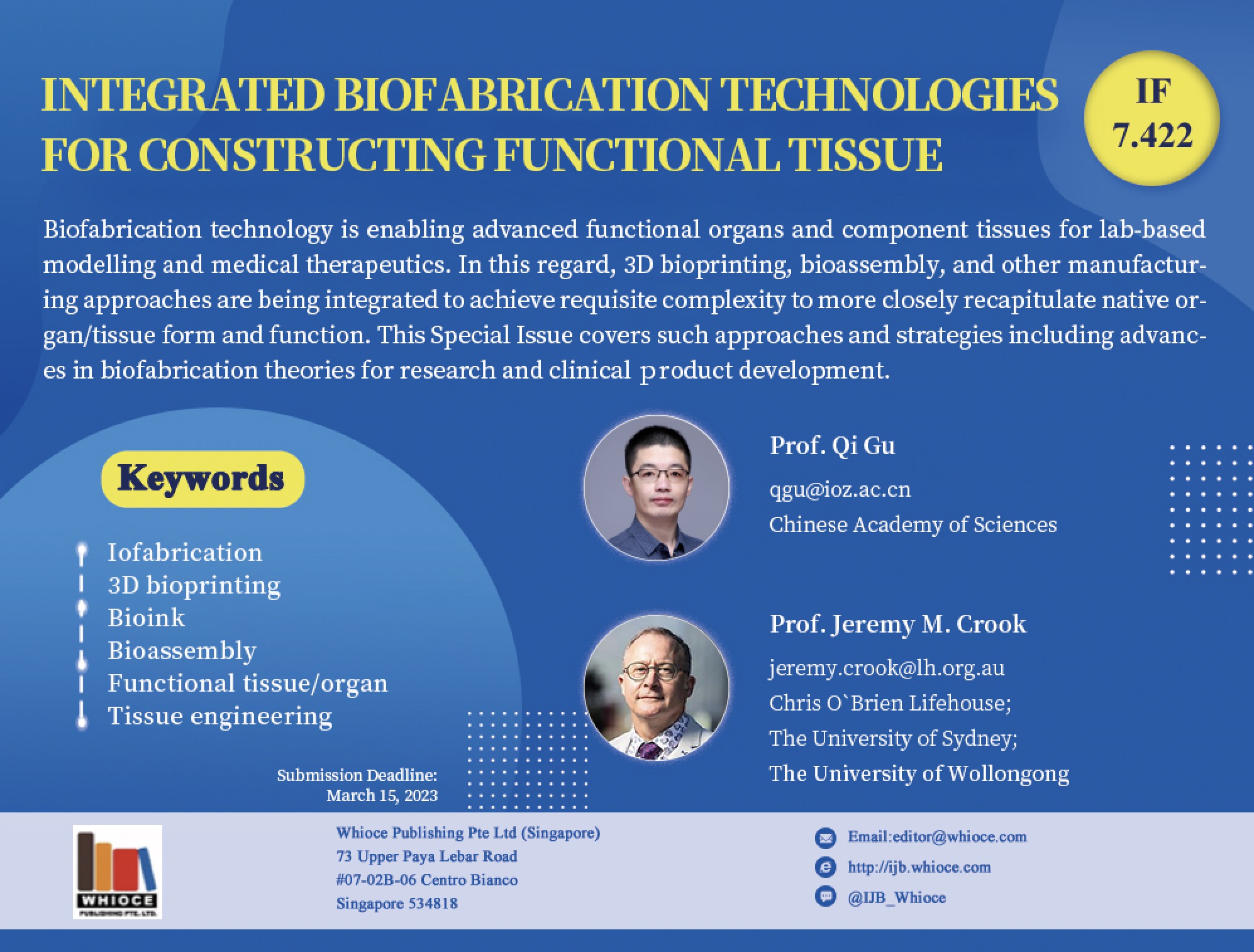
Biofabrication technology is enabling advanced functional organs and component tissues for lab-based modelling and medical therapeutics. 3D bioprinting has emerged as a potential game-changer for ‘bottom up’ manufacturing highly complex cell-laden constructs by precisely controlling the spatiotemporal distribution of cells and biomaterials. On the other hand, bioassembly is more suitable for fabricating hierarchical constructs. Although 3D bioprinting or bioassembly technologies are constantly evolving, production of human-scaled functional organs and tissues remains challenging. In this regard, 3D bioprinting, bioassembly, and other manufacturing approaches are being integrated to achieve requisite complexity to more closely recapitulate native organ/tissue form and function. This Special Issue covers such approaches and strategies including advances in biofabrication theories for research and clinical product development.
Integrating zinc/silicon dual ions with 3D-printed GelMA hydrogel promotes in situ hair follicle regeneration
Bone Sialoprotein Immobilized in Collagen Type I Enhances Bone Regeneration In vitro and In vivo



